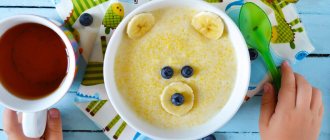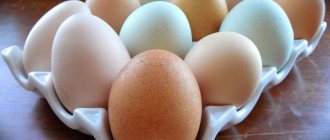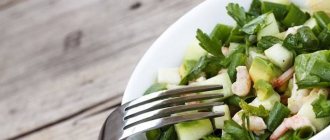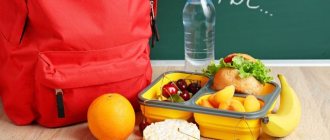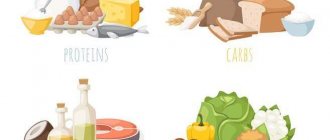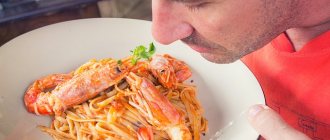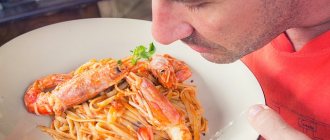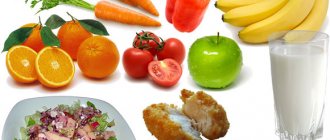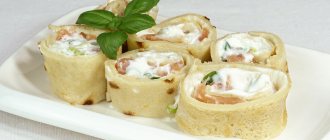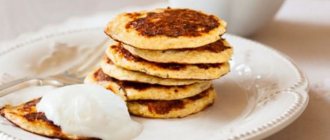During their studies, schoolchildren experience severe stress on the nervous system and the body as a whole. Therefore, it is very important to organize proper nutrition for children, creating a healthy, balanced, nutritious and maximally enriched diet with vitamins and minerals that can satisfy the energy needs of a growing body.
Proper nutrition for a child is a guarantee of his health, school performance and stable immunity. This topic has always received quite a lot of attention, but some questions still remain. It is worth figuring out which regime is best suited for the child, which way to prepare food and the consumption of which foods should be minimized.
Cocoa and chocolate
Cocoa beans contain magnesium, a trace element necessary for normal memory function. Therefore, freshly brewed hot cocoa for breakfast will provide the student with “long-lasting” energy for the whole day. Cocoa also helps to dilate blood vessels, improve blood circulation, stimulate brain activity and improve mood. If your child loves chocolate, then bitter chocolate, which contains more than 60% cocoa beans, will be beneficial for the student’s mind.
Recommendations for organizing proper nutrition for schoolchildren
Pediatricians and nutritionists around the world recommend taking into account the following principles for constructing a daily menu:
- Calorie content. When creating a menu, it is important to take into account the child’s energy expenditure.
- Diversity. This principle is very important, as it allows you to provide the body with the amino acids it needs.
- Mode. Meals should be regular, and the interval between meals should be regulated.
- Balance. Proteins of animal origin are mandatory for a child, while foods containing fast carbohydrates should not exceed 20% of the diet.
- Vitamins. Vegetables and fruits, as rich sources of vitamins, must be present in the daily diet.
Naturally, parents should approach menu planning individually, taking into account all the characteristics of the student. Eating fish 1-2 times a week is also very important. The child must eat dairy products such as yoghurts, cheeses, and milk every day. Of course, you can pamper your children with sweet or fatty foods, but in addition to the prepared menu, and not as a substitute for healthy food.
In order to properly organize healthy nutrition for a child aged 10-17 years, it is worth taking into account the changes occurring with him. Particular attention should be paid to the following points:
- The rate of development and growth at this time is comparable to the rate of a one-year-old child.
- All systems are actively developing: musculoskeletal (skeletal in particular), cardiovascular and nervous, muscle mass is also growing (taking into account gender characteristics). In addition, in connection with puberty, a radical restructuring of hormonal levels occurs.
- The load on the psycho-emotional state increases due to physical restructuring.
- During this period, tension increases due to the social adaptation of the student and heavy workload at school.
A few words about calories
Counting calories is important not only when losing weight, but also to maintain normal weight. You can also calculate calorie content for a child:
- 2400 kcal is the calorie norm for primary school students.
- 2500 kcal is the optimal amount for a high school student.
- 2800 kcal is the amount required for a high school student.
- For children who are interested in sports, an increase of 300 kcal is provided to the daily menu.
In this case, it is worth considering the amount of proteins/fats/carbohydrates for children and adolescents of different ages:
- For a child studying in primary school: proteins – 77 g, including animals 46 g, fats – 79, carbohydrates – 335.
- For a BZHU secondary school student: boys – 90/92/390, girls – 82/84/335.
- For a high school student at BJU: boys – 98/100/425, girls – 90/90/360.
For convenience and to save time, you can use one of the ready-made healthy nutrition rations for schoolchildren offered by General Food.
Between breakfast and lunch
When breakfast ended a long time ago, and lunch had not yet begun, our schoolchildren are fleeing hunger in any way they can. And usually chocolate bars, chips, buns and candies are used. And what? Ate it - and that's it! However, such snacks cannot be called healthy. What, then, is better to kill the worm?
By the way
A popular snack - dried fruits and nuts - is not very approved by nutritionists, since it is very difficult to stop eating this food in time. And the norm for daily consumption of dried fruits for children is only 50–70 g, nuts – 30 g and no more.
Hunger always strikes at the wrong time. It distracts the child from studying, does not allow him to concentrate on the main thing, deprives him of strength, energy, and mood. However, if you drown out your hunger with fast food, you can say goodbye to a good figure and, more importantly, healthy digestion. Therefore, teach your child the right snacks. To do this, be sure to give him with you to school:
Energy bar
No, not the one you thought of - with chocolate, nuts and nougat, but the one you prepared yourself. It is easy to make from 100 g of oatmeal, 2-3 tablespoons of butter, honey, nuts, dried berries and dried fruits. Mix all ingredients in a hot frying pan and wait until the butter melts. Then pour the mixture into molds and place in the oven at 180°C for 20–30 minutes. Cool, cut into portions, wrap in foil and place in a lunch box.
Article on the topic
Cleopatra's recipe. How to make healthy “live yogurt”
Yoghurts
It’s just important that they contain as little sugar as possible. By the way, yogurt contains more protein than milk. And protein helps the body in the formation of muscle tissue, so before a physical education lesson this is just the thing.
Vegetables
Give your child carrot sticks, celery, lettuce, and cabbage. You can make delicious and healthy chips from vegetables. Slice them thinly and bake in the oven with a drizzle of olive oil. It will be tastier if you dip these chips in the sauce. But not store-bought, but homemade. For example, in sour cream and tomato. Tomato paste should be diluted with a small amount of water, pour into hot water, add sour cream, salt, bring to a boil, add flour diluted in cold water. Boil everything for 10 minutes, strain, boil again, season with oil.
Stuffed fruits
You can, of course, just take your child with a couple of apples or bananas, but here you need to take into account that bananas are still too high in calories and therefore are not suitable for snacking, and apples will only whet the appetite. But if you bake an apple with cottage cheese, nuts or dried fruits in the microwave, it will be an excellent snack. Cut out the core of the fruit and stuff it with cottage cheese with honey or dried apricots with nuts. Delicious!
Diet sandwich
Not with sausage, of course, but with some healthy filling. For example, with avocado and boiled red fish - a source of omega-3 fatty acids, important for brain function. Or with cottage cheese and hummus. Use only grain bread (bran would be good). Dry it in the oven or toaster and spread the halves of the bread with cottage cheese mixed with dried fruits or garlic and herbs. You can make hummus yourself, a source of easily digestible protein. Mix half a kilo of boiled chickpeas, 3 tablespoons of olive oil, 2 tablespoons of lemon juice, garlic, salt and pepper to taste in a blender. Consolidation!
Article on the topic
Sandwiches. 7 great ideas for a weekend walk
It will be a good morning!
Both doctors and parents agree that a schoolchild cannot do without breakfast. But what exactly there is at the very beginning of the day is far from the same.
Unfortunately, many schoolchildren do not eat in the morning, preferring to sleep for an extra half hour, and then fly out of the house like an arrow, only taking a sip of a little tea on the go (with candy, of course). This, of course, is no good, because hunger will develop already in the first or second lesson and will distract you from your studies. And, as you know, an empty belly is deaf to learning.
By the way
I wonder what the word “breakfast” has to do with the word “tomorrow”? After all, we are eating it today! And really none. This word once sounded like “morning” - that is, food that is usually eaten early in the morning. Later, the letters were simply replaced. However, what we and our children eat for breakfast affects our tomorrow. We hope it stays healthy and happy!
Turn on the power!
Together with food, the child receives energy, which triggers many processes, including intellectual ones. In addition, lack of breakfast leads to diseases of the gastrointestinal tract and metabolic disorders. Without receiving nutrients and energy in the morning, the body begins to eat itself, and when the reserve is depleted, disorders may occur: stagnation of bile, pain, heartburn, abdominal pain, constipation and flatulence. And then diseases: gastritis, cholecystitis, etc.
In addition, skipping breakfast leads to spikes in blood sugar and a decrease in insulin sensitivity, and then diabetes is just around the corner. And before obesity, by the way. The fact is that a break in food for more than 12 hours contributes to the production of large amounts of the hunger hormone ghrelin, which causes a child who has not received breakfast to overeat during the day. In addition, in the morning the intestines and stomach work as actively as possible, which means that food is absorbed perfectly and you can afford to eat quite a lot.
Article on the topic
Morning with taste. 6 healthy breakfast recipes from national cuisines And finally: warm food in the morning also warms you up, protecting you from hypothermia, which is important in our climate.
However, despite all the benefits of morning meals, in no case should you force a child to eat without desire. There will be no benefit from food that was shoved in by force - it will only disrupt the hormonal system. Therefore, it is better to use other methods.
Good habit
If a child does not even want to look at food in the morning, this means that either he himself has not yet fully woken up, or his hunger has not yet woken up. To solve the first problem, you just need to get your child out of bed early, so that at least half an hour passes from the moment of waking up to breakfast. And ideally – an hour and a half. At this time, you can do a lot of useful things: exercise, take a shower, and even learn some lessons. But so that the child can get up early, naturally, he should not go to bed too late. After all, often refusing to eat in the morning is nothing more than evidence of lack of sleep. Or beginning gastritis - with this disease there is also no morning appetite. Therefore, just in case, take your child to the doctor.
But more often, in order to awaken a child’s appetite, it is enough just to abandon the tradition of late dinners and snacks before bedtime. However, there is another reason not to like morning meals - family reasons. If it is not customary to have a full breakfast in the house, and parents limit themselves to just a cup of coffee before going to work, then it will be difficult for the child to inherit a healthy habit. So we will have to reconsider family foundations. Well, how can we not mention another important point. If your child doesn’t like breakfast, maybe you just don’t know how to cook it?

Chocolate is okay, but no soda. Why a child should not be deprived of sweets Read more
His Majesty's diet
School-age children must be taught to be independent. Breakfast can be scheduled for 7-8 am. Snack is at 10-11 o'clock, at school, during recess. Lunch can take place either at home or at school. We plan dinner for 19-20 pm. Proper nutrition for school-age children requires that breakfast and lunch should be the most energy-dense, but it is better to have dinner two hours before bedtime.
As for the cooking method, there are no special recommendations. If a child is prone to gaining excess weight, then it is worth excluding fried foods, as well as sweets and carbonated drinks from the diet.
Lunch recipes for the week
School lunches, alas, are not always edible, and most children love fast food. Therefore, instead of lunch in the school canteen, a child often buys something that is not very healthy. However, fast food can also be a good lunch if you prepare such dishes yourself.
Pizza
It's easy to prepare too. Only the dough should be made not from wheat, but from whole grain, oatmeal or rye flour, mixing it with 1 egg and a glass of kefir. Instead of salami - low-fat ham or better boiled meat, and instead of ketchup - tomato paste or natural tomatoes. Soft cheese and as many vegetables as possible.
Burger
Make it as easy as shelling pears. You just need to divide a store-bought bun with sesame seeds (or a grain bun with bran) in half, and put a homemade chicken, beef or turkey cutlet inside. For the cutlet - greens and any vegetables (cucumbers, tomatoes, sweet peppers, any lettuce, Chinese cabbage, onions or green onions). Mayonnaise can be replaced with unsweetened yogurt, sour cream or soft cheese. That's all!
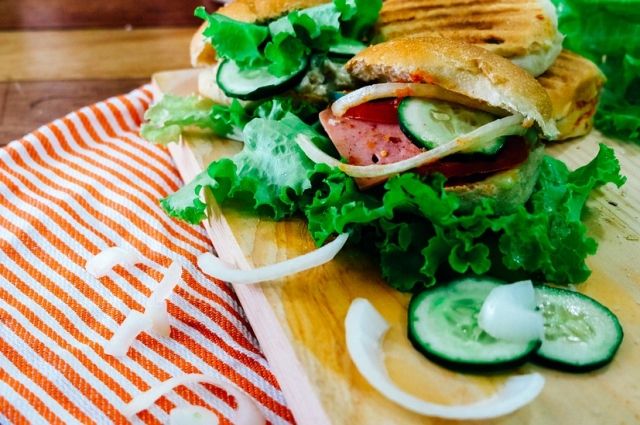
Fast food for schoolchildren. How to make burger and shawarma healthy Read more
Nuggets
These are pieces of chicken fried in breading. Of course, eating fried foods regularly is harmful. But instead of frying the nuggets, you can bake them in the oven. And if you make the breading yourself, the benefits will be even greater. Grind unsweetened corn flakes in a blender, add an egg beaten with salt, and mix. Dip a piece of chicken meat in batter, then bread it and place on a baking sheet greased with butter. 20 minutes in the oven at 220 degrees – and you’re done.
Shawarma
For the base, you can use pita bread or corn tortilla. Or even a leaf of lettuce. Grease the base with sour cream, and put a layer of omelette on top, then crumble boiled chicken (or other lean meat), cucumbers, tomatoes, onions, herbs, grated hard cheese and roll into a tube. Real jam!
Article on the topic
4 simple recipes for low-calorie and healthy sandwiches
Sandwich
Whole grain bread will make it healthier. Grease the inside of the sandwich with soft cheese - both for taste and so that the filling inside holds better. Well, then place between pieces of bread (by the way, they can be dried in a toaster) any boiled meat or fish, leafy vegetables, herbs, pine nuts. Of course, such food is still an ordinary sandwich and cannot replace hot food. But it’s better than nothing or a sausage roll bought at the school cafeteria. Although why not...
Sausage in dough
First the dough: for 100 g of flour - 1 egg, half a pack of soft cottage cheese, a little salt. Place the dough in the refrigerator for an hour. Meanwhile, make chicken breast sausages. Grind the meat in a blender, add the egg, salt, paprika and any spices, herbs, garlic. Make sausages from minced meat and, wrapping them in cling film, tie the ends. Cook, and when it cools down, remove the film. Now you can remove the dough from the refrigerator. Roll it into a rope and wrap it tightly around the sausages. Coat the top with egg yolk and place in the oven, preheated to 180 degrees. When they are browned, take them out!
Is there still room in your lunch box? Wonderful! It should be occupied by vegetables and fruits. Cut the apples into slices, carrots and cucumbers into sticks, and disassemble the orange into slices. Mandarin will fit in anyway. And don’t forget about a drink - bags of milk, kefir or a bottle of water. Now you can rest assured - your child will be well-fed and will receive all the best and healthiest things.
What kind of snack can you give your schoolchildren to take with them?
If the school food system is not approved by parents, they may give the child a snack to make up for the missing meal. It is important to think about the packaging of the snack and its composition. Packaging must keep food fresh for at least 4-5 hours; Rospotrebnadzor names a plastic container as the optimal option. As for the snack itself, preference should be given to non-perishable foods. The recommended snack looks like this: fruit, 30-40 g of nuts, a sandwich with cheese or baked meat (the sandwich should be without butter and mayonnaise - they shorten the shelf life of the dish), fresh cucumber or carrot sticks. You should also give your child a drink: optimally - iced tea, fruit juice or still water.
What should children be vaccinated?
Summing up the topic of proper nutrition for school-age children, it is important to note that the greatest importance is given to nutritional culture. It is important to teach your child to eat only the right foods from childhood. He should be encouraged to eat a varied and nutritious diet. You cannot deprive yourself of fresh fruits and vegetables. It is worth paying special attention to foods rich in starch, and the benefits of milk and dairy products are absolutely invaluable. The main source of fluid for the body should be drinking water, but not carbonated or sweet water.
What should a schoolchild's diet be like?
The energy value of the diet should be selected taking into account the age, gender, physical constitution, physical and intellectual load of the student. It should compensate for the student’s energy costs, but not exceed them. Rospotrebnadzor indicates the average values of the recommended energy value for several age groups: from 7 to 11 years - 2300 kcal per day, from 11 to 14 years - 2500 kcal per day, from 14 to 18 years - up to 3000 kcal per day.
Also, the student’s diet must be balanced in all food components. It is recommended to maintain the ratio of proteins, fats and carbohydrates as 1:1:4. The content of plant and animal proteins should be maintained in a ratio of 2:3. Fats should be predominantly of plant origin.
Do not forget about the diversity of your diet. Schools should avoid the same type of food. Children's diet must include a variety of dairy, meat, fish, egg dishes, vegetables, fruits, nuts and vegetable oils. Particular attention should be paid to culinary processing: school kitchens should eliminate frying and deep-frying, giving preference to baking, boiling and steaming. Dishes should be prepared primarily from fresh ingredients, however, taking into account seasonality, the use of freshly frozen ingredients is allowed.
Article on the topic
Kids and cutlets. Who feeds schoolchildren worms, mold and arsenic?
